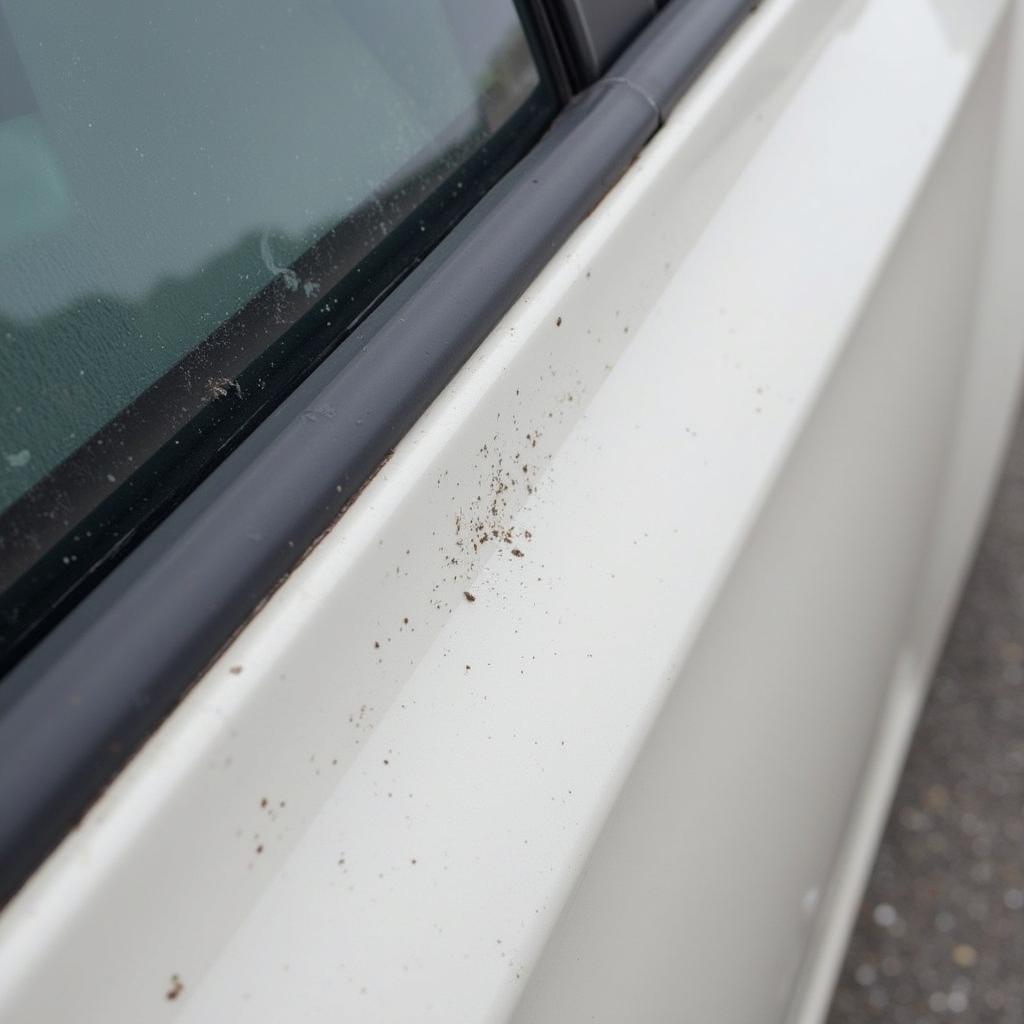Knowing How To Spot Repair Car Paint is a valuable skill. Whether it’s a minor scratch from a rogue shopping cart or a more noticeable chip from a stray rock, identifying repaired paint can help you assess a used car’s history or even evaluate the quality of a recent repair job on your own vehicle. This guide will equip you with the knowledge to confidently identify signs of repaired car paint.
If you’re examining a used car, knowing how to spot a repair can give you valuable insight into the car’s past and potential hidden damage. Even on your own car, being able to identify a quality repair job versus a shoddy one can save you time and money down the road. how repair car scratch can also be helpful to understand if the repair was done well initially. This article will cover a range of techniques, from simple visual inspections to more advanced methods for detecting repainted areas.
Visual Inspection: The First Line of Defense
The most basic way to spot repair car paint is through careful visual inspection. Look for inconsistencies in the paint’s texture, color, and finish. This includes looking for areas where the paint seems thicker or thinner than surrounding areas, often a telltale sign of a repair.
Checking for Texture Differences
Run your hand lightly over the car’s surface. Feel for any bumps, ridges, or areas of roughness. Repaired areas often have a slightly different texture than the original factory paint. This can be due to overspray, uneven sanding, or improperly applied clear coat. Even minor imperfections can be a clue.
 Spotting Texture Differences in Repaired Car Paint
Spotting Texture Differences in Repaired Car Paint
Color Matching Inconsistencies
Pay close attention to the car’s color under different lighting conditions. Slight variations in color, especially in metallic or pearlescent paints, can indicate a repair. Move around the car and observe the paint from different angles. Sometimes, a repainted area might appear slightly darker or lighter than the surrounding original paint.
Examining the Finish
Examine the paint’s finish for inconsistencies in gloss or reflectivity. Repaired areas may have a different sheen compared to the original paint. A duller or overly shiny spot can be a sign of a recent repair. Also, look for signs of “orange peel,” a textured appearance resembling the skin of an orange, which can indicate improper paint application.
Advanced Techniques for Spotting Repairs
While visual inspection is a good starting point, sometimes more advanced techniques are needed. These methods can help you uncover repairs that are less obvious to the naked eye.
Using a Paint Thickness Gauge
A paint thickness gauge is a device that measures the thickness of the paint on a car’s body. This is a very effective way to identify repainted areas, as they often have a thicker layer of paint than the factory original. how to repair car panels might explain why panels have different thickness after repair. You can purchase these gauges online or at most auto parts stores.
Checking for Overspray
Overspray occurs when paint particles drift onto adjacent areas during the repair process. Carefully examine areas around body lines, trim pieces, and window seals for signs of overspray. It might appear as a faint dusting of paint that doesn’t quite match the surrounding area. how to repair car bumper discusses repairs which if not done properly, can lead to overspray.
 Detecting Overspray on Car Trim
Detecting Overspray on Car Trim
Looking for Masking Tape Marks
Masking tape is used to protect areas that shouldn’t be painted during a repair. Sometimes, faint lines or residue from the masking tape can be left behind, indicating a previous repair.
What to Do If You Find Repaired Paint
Discovering repaired paint doesn’t necessarily mean there’s something wrong with the car. However, it’s a good opportunity to ask more questions, especially when buying a used car. Inquire about the nature of the repair and if there was any underlying damage. If you’re unsure, consider having a professional mechanic inspect the car. A professional can better assess the quality of the repair and identify any potential hidden issues. how to repair a car in gta vice city and how to repair car in vice city with cheat code are fun reads but won’t help with real cars!
Conclusion: Mastering the Art of Spotting Repair Car Paint
By understanding how to spot repair car paint, you’ll be better equipped to evaluate the condition of a vehicle. From simple visual cues to more advanced techniques, these methods will help you identify signs of previous repairs and make informed decisions about purchasing or maintaining a car. Knowing how to spot repair car paint empowers you as a car owner or buyer.
FAQ
- Is repaired car paint always a bad sign? No, not necessarily. Minor repairs are common. The key is to understand the extent and quality of the repair.
- Can I repair car paint myself? Yes, minor scratches and chips can often be repaired with DIY kits.
- How much does professional car paint repair cost? The cost varies depending on the extent of the damage and the type of paint.
- How can I prevent damage to my car’s paint? Regular washing and waxing can help protect your car’s paint.
- What is the best way to match paint for a repair? Consult a professional auto paint supplier for the best color match.
- How long does it take for repaired car paint to cure? This depends on the type of paint and the repair process, but generally it can take a few days to a week.
- Can I tell if a car has been in a major accident by looking at the paint? While repaired paint can sometimes be an indicator, it’s not always definitive. A thorough vehicle history report is recommended.
For further assistance, please contact us via WhatsApp: +1(641)206-8880, or Email: [email protected]. Our customer service team is available 24/7.


